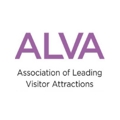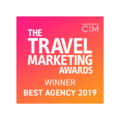We Need to Talk about Word-of-Mouth Marketing

Nine tips for nurturing destination ambassadors
Even in the age of Google, we still rely a lot on word-of-mouth. It’s human nature to look to others to help us make decisions that come with a perceived risk – finding a plumber, buying a car, or choosing a holiday. The fact that someone we trust can vouch for something carries a lot of weight. In essence, it’s free marketing, so if you don’t have a plan to make more of these word-of-mouth ‘ambassadors’, we’ve got some tips for you.
First, let’s look at the case for nurturing ambassadors. According to Nielsen’s research, word-of-mouth recommendation is the most powerful influence on deciding where to travel. In fact, 92% of us trust recommendations from friends and family above all other forms of advertising. In second place, branded websites, and third, consumer opinions posted online.
Other research suggests social media is one of the most critical marketing channels for travel brands. BLITZ’s report on consumer-travel planning behaviour reveals 84% of millennials and 73% of non-millennials are now more likely to plan a trip based on someone else’s social media photos than on any other form of media. And in January 2018, Facebook announced its algorithm will show more content from friends, families and groups, and less from brands and pages.
So look at the research and the trends in social media, and it’s clear there’s a real opportunity to use word-of-mouth marketing, including user generated content (UGC), to promote your destination. Here are a few tips to help you create your own ambassador plan.
92% of us trust recommendations from friends and family above all other forms of advertising.
9 things to think about:
1. Identify your ambassadors – who’s coming to your destination? Who’s talking about you on social, posting pictures or videos of their experiences for others to see? Don’t just choose anyone with a nice word to say about your destination. Make sure they fit your own aspirations and communications – shaky selfies won’t cut it for a luxury hotel brand.
2. Get involved – once you’ve identified an ambassador, interact with them and their content. Thank them and always ask before you use their content.
3. Big is good – if they have a large following on social media, great. Keep an eye on their feeds and repost their content. Or feature it somewhere on your site and they’ll be more likely to tell their nearest and dearest about it. Engage with them on their terms, follow them on Twitter, ‘like’ and RT stuff that’s relevant to what you do.
4. But big isn’t always better – micro-influencers (those with under 30k followers) have niche audiences, but they’re highly active in their communities, Typically, they receive 60% more engagement than those with larger followings, probably because they have more time to engage with everyone who engages with them. If you can find micro-influencers that are passionate about your destination, then they’re more likely to promote it purely out of love.
Choose ambassadors that fit your own aspirations and communications.
5. Make a hash of things – many destinations overlook this powerful way to signpost traffic to their website. Spend time researching the most popular hashtags and posts related to your destination or attraction. Then amplify them through your own social channels. #manchesterveningnews has done this to great effect on Instagram, with over 60,000 posts and counting.
6. Channel the right message – Twitter isn’t popular across most of Europe and in the Nordics you’re more likely to find social media users who lurk but don’t engage. However, Facebook and Instagram are very popular for UGC as they’re particularly visual social platforms. Knowing where your audience is, how they engage, and how best to interact with them is key.
7. Share the love – share your visitors’ UGC as part of your marketing. If they love your destination or attraction, and they’re expressing it creatively, enthusiastically or passionately, encourage them to share it and post it. They could open up your destination to a previously untapped audience. Why? Because “user-generated content is the most trusted, relevant and influential content marketers have at their disposal .” Western Australia Tourism’s website does this well. It has a section dedicated to real-life traveller experiences, and feels more enchanting and authentic than professional images.
If people love your destination or attraction, and they’re expressing it creatively, enthusiastically or passionately, encourage them to share it and post it.
8. But keep it real – be wary of running a competition to gather UGC. Done badly, it can feel ‘staged’ and disingenuous. Done well, it can be extremely powerful. For example, Marriott Hotels handing out GoPro cameras to hotel guests and inviting them to create and share their own travel stories to thousands watching at home.
9. Promote your individuality – don’t just replicate what others are doing or saying. Hone in on what makes your destination unique or visit-worthy. Every town has its hot spots, but look to source content and influencers who show a range of experiences and locations.
Of course, ambassadors on their own are unlikely to make or break your visitor numbers in the short term, but they are an important (though often overlooked) part of the puzzle. We like to think of them like ‘compound interest – to begin with the returns are small, but over time the benefits grow and grow, provided you nurture and maintain them.
If you’re looking to find out more about how to nurture your own destination ambassadors, please get in touch with us on 0117 440 0500 or email simon@digitalvisitor.com.
Digital Visitor is the UK's leading strategic agency in travel, tourism & hospitality. For any more information on how we can help, get in touch.



%202-1.png)






